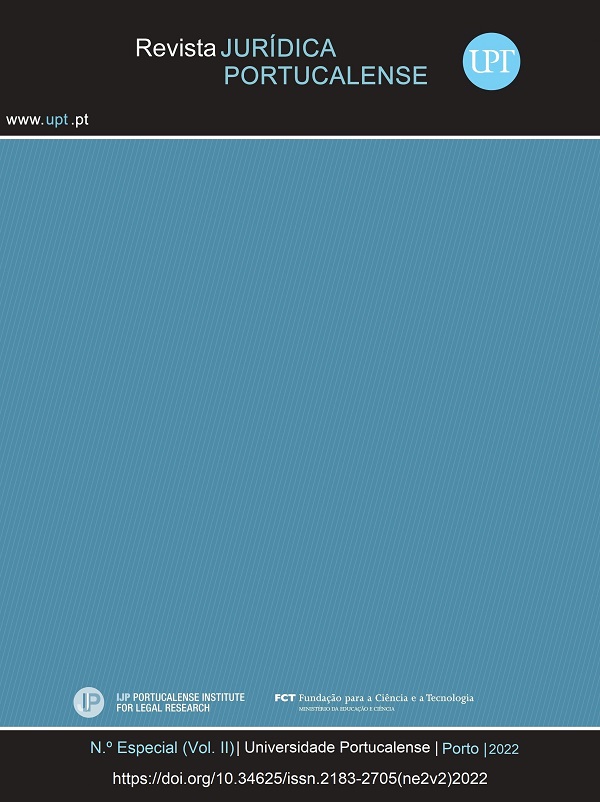Implicações sociais da justiça digital
Palavras-chave:
Administração da Justiça; Processo digital; Pandemia; Direitos humanos.Resumo
Neste estudo são analisadas as implicações sociais da justiça digital. A crise pandémica veio alterar a forma como se passou a administrar a justiça. Tornou-se premente encontrar, pela via telemática, soluções para o processo civil como um todo, que o tornasse mais ágil no exercício da sua inata função social e distributiva da justiça e do bem comum. Os objetivos essenciais consistiram em destacar as medidas corretivas indispensáveis à administração da justiça, ao mesmo tempo, determinar se as circunstâncias extraordinárias causadas pela pandemia, que levaram à aplicação do método digital, devem conduzir a uma nova era no processo civil e constituir uma oportunidade para um novo começo, tornando-o mais moderno e funcional, resistente a qualquer forma de pressão ou momento excecional, assumindo assim as medidas digitais adotadas um caráter definitivo. A metodologia usada teve por base o estudo do método digital, a sua utilização nos tribunais; a avaliação e seleção dos juízes e também dos advogados, devendo ambos possuir conhecimentos ao nível digital, além do perfeito conhecimento da lei. Recorreu-se à análise dos diplomas legais que enquadram e legitimam a aplicação da justiça digital, dos novos meios tecnológicos e plataformas, passando pelos sistemas de inteligência artificial e pela problemática da decisão judicial robótica. Embora ainda haja um longo caminho a percorrer, a digitalização da justiça contribuiu para a sua modernização e maior agilidade nas diversas fases processuais, superando em boa parte um sistema que se apresentava lento e obsoleto. A introdução da inteligência artificial, através dos softwares que servem de motores de busca e de bases de dados capazes de fornecerem aconselhamento jurídico (machine learning), tem-se revelado de grande valia embora levante questões de segurança e origem dos dados para as quais ainda não foram encontradas respostas.Referências
ASCENSÃO, José de Oliveira, Estudos sobre Direito da Internet e da Sociedade da Informação.Coimbra: Almedina. 2001.
BITTAR, EDUARDO CARLOS BIANCA. Semiótica, Direito & Arte: entre teoria da justiça e teoria do direito. 1 ed. São Paulo: Almedina, 2020.
CAPRA, FRITJOF. A revolução eco jurídico o direito sistêmico em sintonia com a natureza e a comunidade. Editora Cultura- São Paulo. 2015.
COPPOLA I., DE PROCESSO, NAPOLI, Editoriale Scientifica, 2017.
COPPOLA I., Principi ed argomenti di scrittura giuridica dal negozio agli atti normativi e processuali (in Collana UNIVERSITA'-ESI), Edizioni Scientifiche Italiane, Napoli, 2016.
COPPOLA I., Capitale umano o decisioni robotiche. Un nuovo processo in Italia, in Collana Ricerche Giuridiche n. 156, Napoli, 2019.
COPPOLA I., Il processo civile telematico, Salerno, 2014.
KAFKA F., Il processo, Milano 1978.
MANDRIOLI C., CARRATTA A., Diritto Processuale civile, I vol. Torino, 2019.
QUERZOLA L., Contributo allo studio degli atti processuali tra forme e linguaggio giuridico, Torino, 2018.
REBELO, FERNANDA. “O Comércio Eletrônico e os Novos Desafios da era digital á Luz da Diretiva Europeia 2000/31. disponível em http://revistas.rcaap.pt/juridica
RODOTA' S., Il diritto di avere diritti, Roma-Bari, 2012.
SATTA S., Il mistero del processo, Milano, 1994.
SUSSKIND S., Tomorrow's Lawyers, Oxford, II ed., 2017.
Downloads
Publicado
Como Citar
Edição
Secção
Licença
Autores que publicam nesta revista concordam com os seguintes termos:
- Autores conservam os direitos de autor e concedem à revista o direito de primeira publicação, com o trabalho simultaneamente licenciado sob a Licença Creative Commons Attribution que permite a partilha do trabalho com reconhecimento da autoria e publicação inicial nesta revista.
- Autores têm autorização para assumir contratos adicionais separadamente, para distribuição não-exclusiva da versão do trabalho publicada nesta revista (ex.: publicar em repositório institucional ou como capítulo de livro), com reconhecimento de autoria e publicação inicial nesta revista.
- Autores têm permissão e são estimulados a publicar e distribuir o seu trabalho online (ex.: em repositórios institucionais ou na sua página pessoal) a qualquer ponto antes ou durante o processo editorial, já que isso pode gerar alterações produtivas, bem como aumentar o impacto e a citação do trabalho publicado (Veja O Efeito do Acesso Livre).
A RJP não aplica taxas de submissão, publicação ou de qualquer outra natureza, sendo os artigos publicados em acesso livre e aberto, com a missão de difusão do conhecimento científico e o debate de temas jurídicos na área das Ciências Jurídicas.






